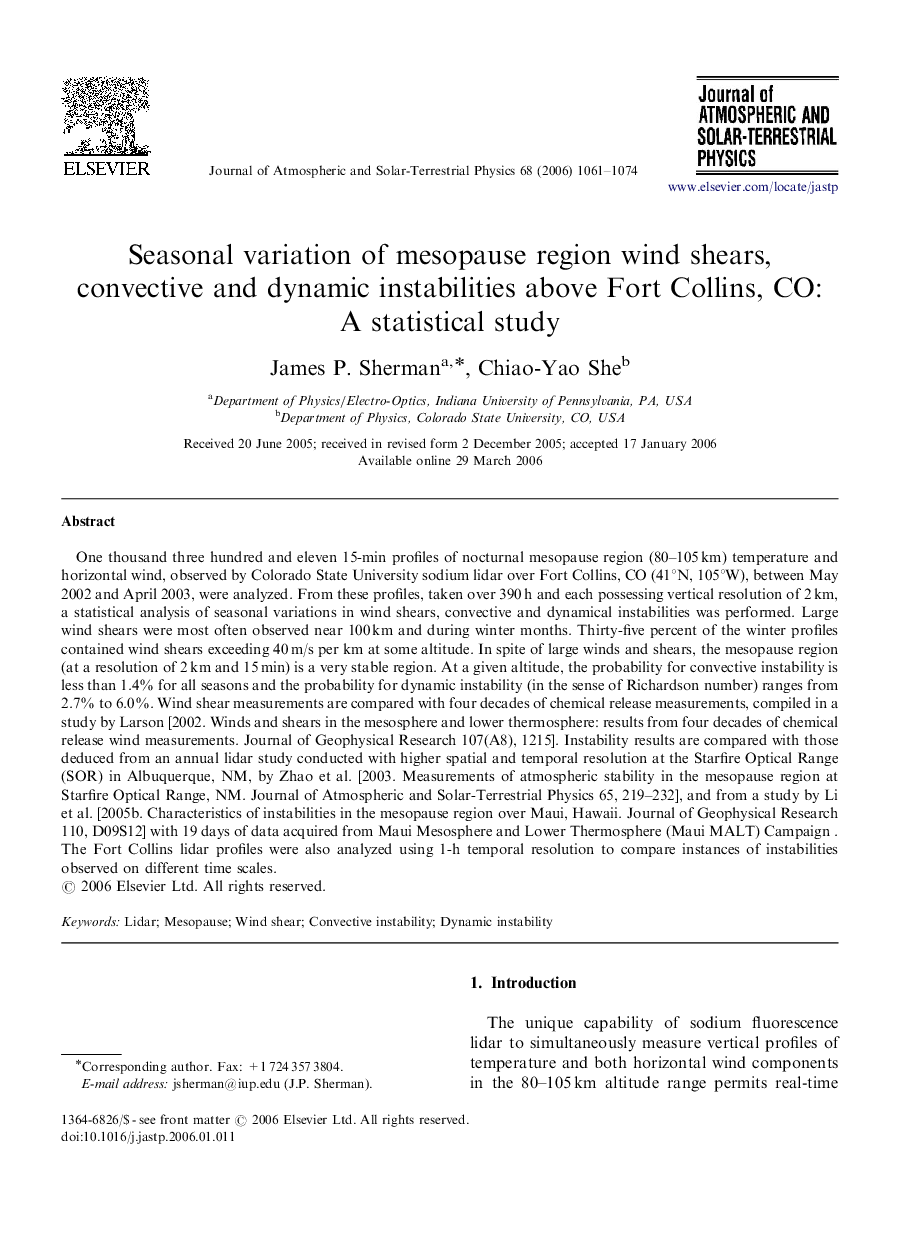| Article ID | Journal | Published Year | Pages | File Type |
|---|---|---|---|---|
| 1778402 | Journal of Atmospheric and Solar-Terrestrial Physics | 2006 | 14 Pages |
One thousand three hundred and eleven 15-min profiles of nocturnal mesopause region (80–105 km) temperature and horizontal wind, observed by Colorado State University sodium lidar over Fort Collins, CO (41°N, 105°W), between May 2002 and April 2003, were analyzed. From these profiles, taken over 390 h and each possessing vertical resolution of 2 km, a statistical analysis of seasonal variations in wind shears, convective and dynamical instabilities was performed. Large wind shears were most often observed near 100 km and during winter months. Thirty-five percent of the winter profiles contained wind shears exceeding 40 m/s per km at some altitude. In spite of large winds and shears, the mesopause region (at a resolution of 2 km and 15 min) is a very stable region. At a given altitude, the probability for convective instability is less than 1.4% for all seasons and the probability for dynamic instability (in the sense of Richardson number) ranges from 2.7% to 6.0%. Wind shear measurements are compared with four decades of chemical release measurements, compiled in a study by Larson [2002. Winds and shears in the mesosphere and lower thermosphere: results from four decades of chemical release wind measurements. Journal of Geophysical Research 107(A8), 1215]. Instability results are compared with those deduced from an annual lidar study conducted with higher spatial and temporal resolution at the Starfire Optical Range (SOR) in Albuquerque, NM, by Zhao et al. [2003. Measurements of atmospheric stability in the mesopause region at Starfire Optical Range, NM. Journal of Atmospheric and Solar-Terrestrial Physics 65, 219–232], and from a study by Li et al. [2005b. Characteristics of instabilities in the mesopause region over Maui, Hawaii. Journal of Geophysical Research 110, D09S12] with 19 days of data acquired from Maui Mesosphere and Lower Thermosphere (Maui MALT) Campaign . The Fort Collins lidar profiles were also analyzed using 1-h temporal resolution to compare instances of instabilities observed on different time scales.
